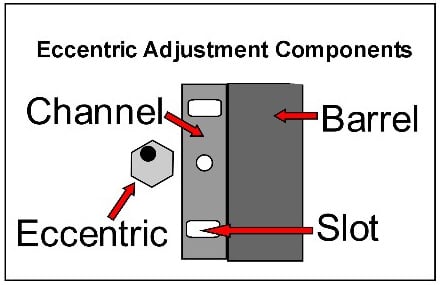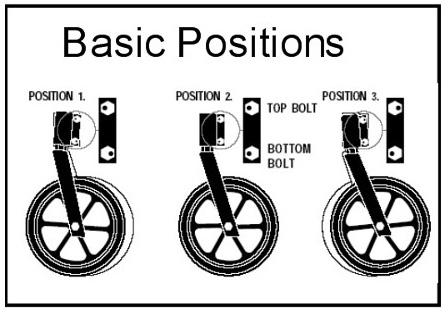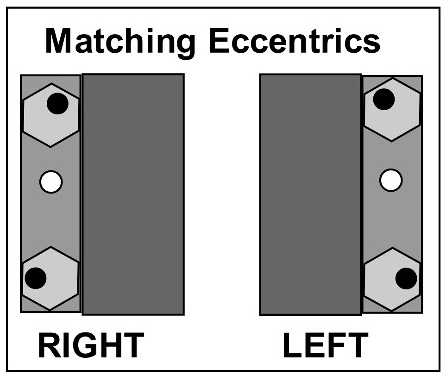The phrase ‘eccentric adjustment’ might have you scratching your head if you’re a manual wheelchair user, but lo and behold, it’s a skill you should learn for staying on top of mechanical maintenance.
In our post, we cover the basics of what this type of adjustment entails, and how it affects the overall performance of your wheelchair. Let’s jump to it!
An Overview of Eccentrics
We aren’t going to sugar coat it- you’re right to feel confused about eccentric adjustments. It’s certainly a difficult concept to understand at first, but bear with us, and it’ll be crystal clear by the end of this post.

Let’s start with what an eccentric is. It is a small hardware piece in the shape of a hexagon with one offset hole. It’s designed to fit into a channel on an angle-adjustable wheelchair component, such as a caster barrel.
The eccentric is important because it acts as the “glue” that holds the bolt of the wheelchair component firmly together. When fixed in place, the hole of the eccentric must align with the mounting slot, fitting into the retaining channel and locking the bolt into position.
There’s a reason the eccentric features an offset hole. This design allows the eccentric’s position to rotate within the channel and be set in eight different positions on the slot.
One of the common wheelchair components subject to eccentric adjustment is a caster barrel, which needs to be set at an angle that ranges from 82-degrees to 98-degrees.
Understanding Mounting Points
Before we take a more in-depth look at how eccentric adjustments work with caster barrels, it’s essential to discuss the connection between mounting points and angle adjustment.
There are different types of mounting points…
- Two fixed mounting holes: This doesn’t allow for angle adjustments of caster barrels or back canes.
- Slotted mounting points: This mounting type allows for angle adjustments in a fore-aft position from the top mounting point to the bottom point, which creates an angle. The slots are held in place by friction, so a hard enough impact can knock the mounts out of alignment. Eccentric washers come in handy for securing the slots in place.
Eccentrics and Caster Barrels
The caster barrels must be adjusted at a 90-degrees angle from the ground to ensure that your wheelchair performs at its best. This entails tightening up the eccentrics.
To do this, start by loosening the top and bottom eccentric nuts located on the caster barrels. It should be loose enough so that the nuts can rotate outside of the channel.

This allows you to easily pivot the caster barrel until it’s set at a 90-degree angle, straight up and down with the floor.
Double-check the accuracy of the adjustment angle by utilizing a hand level, square, angle-finder, or even a hardcover book spine. The barrel should be level with the ground.

Holding the barrel position in place, carefully rotate the eccentrics until they fit inside the channel. You might need to toggle the barrel a bit to secure it properly.
After one last check to ensure the 90-degree angle is accurate, tighten up the eccentrics and follow suit with the other caster barrel.
Note that with angle-adjustable back canes, it’s common to have only one eccentric on each side. Follow the steps above to loosen the setup, reposition the canes, then fit and tighten the eccentrics to secure the hardware.
Final Thoughts on Eccentric Adjustment
As you can see, the concept of eccentric adjustments isn’t as complicated as the name suggests. This hardware has one purpose: to secure a component adjustment so that it won’t move, enhancing the performance of the wheelchair.
One of the most common parts that need eccentric adjustment is the caster barrels, allowing the user to check that the chair’s alignment is safe and precise.
Resources & References:
- Wheelchair Biomechanics, Physiopedia.
- Keys to Manual Wheelchair Configuration, Agency for Clinical Innovation.